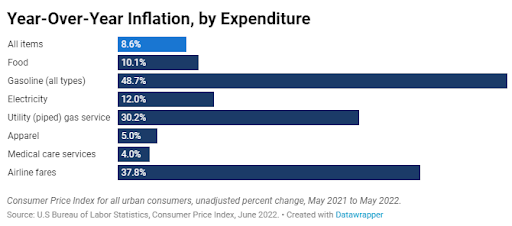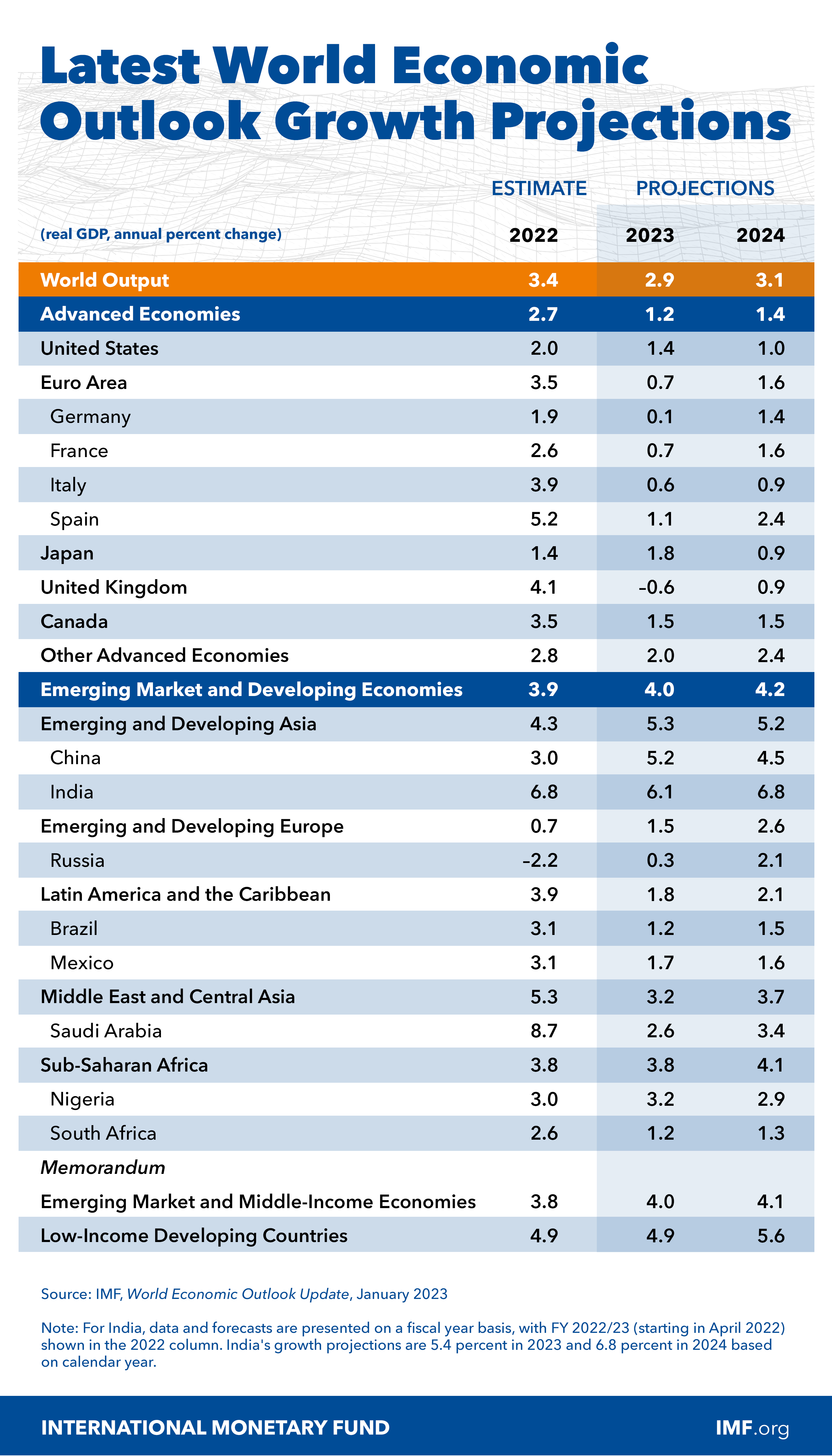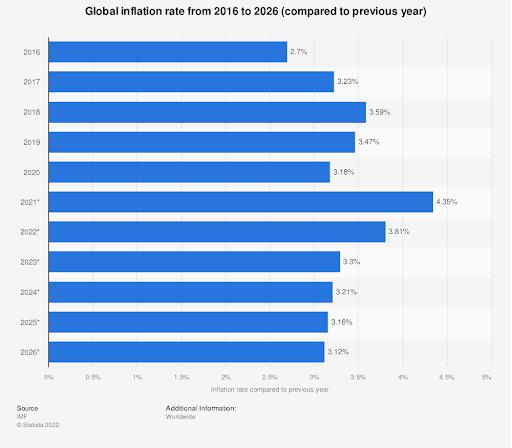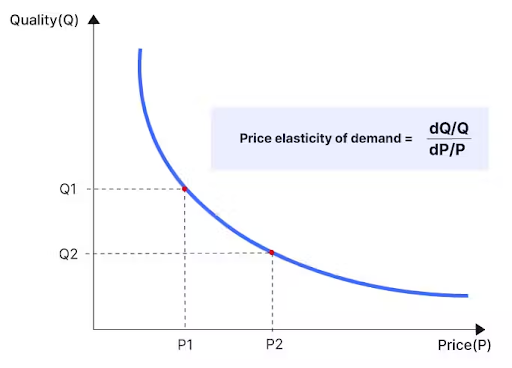“Inflation is as violent as a mugger, as frightening as an armed robber, and as deadly as a hit man.” – Ronald Regan.
After a shaky recovery in 2021, the weak global economy has been hit by several shocks, including higher-than-expected global inflation, particularly in the US and other European economies. According to a survey, US hit 8.6% in May, the highest since December 1981.

Source: SHRM
The worse-than-expected a continuing pandemic, slowdown in China, and the costly Russia-Ukraine geopolitical conflict are some prime factors contributing to global inflationary pressures. When combined with rising energy and food costs, and persistent supply chain disruptions, it is no surprise that the global inflation rate has been climbed upwards for this year. As per the predictions, 6.6% in advanced nations and 9.5% in current markets and developing economies.

Source: IMF
In the present scenario, customers are more concerned about paying off debt and covering day-today costs rather than indulging on discretionary products in an inflationary conditions. Typically, this is dreadful news for most retailers since it will eventually lead to lower sales and complexities with inventory forecasting. The biggest concerns for retailers are compressed margins, slowing sales growth, and increasing expenses.
With its inflationary pressures and post-COVID economic recovery, today’s retail environment makes it imperative for brands to consider many additional factors that could contribute to shopping behavior patterns – price elasticity, competitor pricing, purchasing power, and unemployment, to name a few! Pricing proactively can’t only play a crucial role in surviving the changing consumer behavior. But it can also allow retailers to prepare for any other external things leading to an economic downturn.
To assist you explore this challenging period, we’ve gathered five action steps for dealing with pricing and inflation in retail industry. Let’s dive in!
Five Action Steps to deal with Pricing Inflation in the Retail Industry

Source: Statista
#1 Ensure price competitiveness on the right items
To balance rising business costs with declining sales and ensure customer loyalty, it is essential to manage price hikes in a targeted way. Instead of complete product price increases across all categories, tailor it to product and customers segments depending on customer price sensitivity and category margin performance.
First, conduct an essential value item (KVI) analysis to identify the products your customers value. These are the products on which you must not elevate prices. After placing KVIs, increase prices on less elastic products. This strategy helps in financing the spending on truly significant, perception-driven products. So, considering customers’ willingness to pay and product differentiation when making pricing decisions can help companies make more thoughtful pricing decisions in the present and when we pass the current inflationary period.
#2 Understanding the pricing elasticity
Price elasticity refers to the sensitivity of consumer demand to changes in price. By understanding the price elasticity of their products, retailers can adjust their pricing strategies to maximize revenue.

Source: 7Learnings
Products with low price elasticity can be priced higher without significantly impacting demand, while products with high price elasticity may require lower prices to boost demand. Retailers can use data analytics to identify price elasticity for different products and adjust prices accordingly.
#3 Go granular with pricing and promotions
Instead of extensive price increases that may destroy customer trust, retailers can tailor their inflationary price response by product and consumer segment, considering both margin customers’ and performance willingness to pay. Raising prices is unhappening for both retailers and customers.
Retailers that take a robust approach are more likely to turn up with profitability and customer relationships intact. Further, retailers can re-evaluate their price and promotion mix during this time; pulling back on promotions can help manage cost increases without raising prices.
#4 Enhanced supply chain visibility and diversification
Retailers can overhaul their supply and distribution networks with in-depth visibility into supply chains. This lets them direct shipments through less congested and more affordable ways, locate distribution centers in the most suitable places (that can balance labor and last-mile costs), and take steps to lower distribution overhead.
So how can retailers ensure such an optimized supply chain? Leveraging retail analytics solutions helps monitor every stage of the supply chain, gather relevant data, and organize it in a centralized repository. The data can be reviewed, analyzed, and eventually mined from there for helpful information to enhance business operations and strategic decision-making.
One thing is transparent, to beat the impact of climbing inflation and changes in customer purchasing patterns, retailers require data and technology-based tools to make sense of that data. Data analytics in retail can provide deeper insights through a holistic market view, letting retailers modernize processes, provide better customer experiences and enhance retailer-supplier collaboration.
#5 Eliminate low-margin products that are driving traffic
Retailers can improve their profitability by focusing on high-margin and high-traffic products. By using data analytics to identify products with low margins and low demand, retailers can eliminate them from their inventory.
This can help retailers to reduce their costs and improve their profitability without negatively impacting their sales. Retailers can also use data analytics to identify trends in customer purchasing behavior and adjust their product offerings accordingly to better meet customer needs and preferences.
Final Thoughts
Today’s economic environment and concerned pricing pressures are complexed for retailers and consumers. Some organizations have responded by announcing an increase in prices across product categories. Organizations can manage pricing margins responsibly and profitably during inflation.
Determining how and where new opportunities exist can assist organizations drive growth, control inflation, and remain profitable. Our retail analytics services can help you understand the changing customer preferences in real-time, pay attention to what they want, and act quickly. Moreover, you can delegate your employees to work more productively, engage with affinity, and scale loyalty-building customer service.

